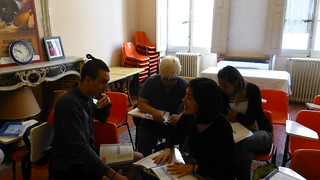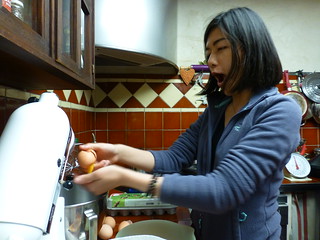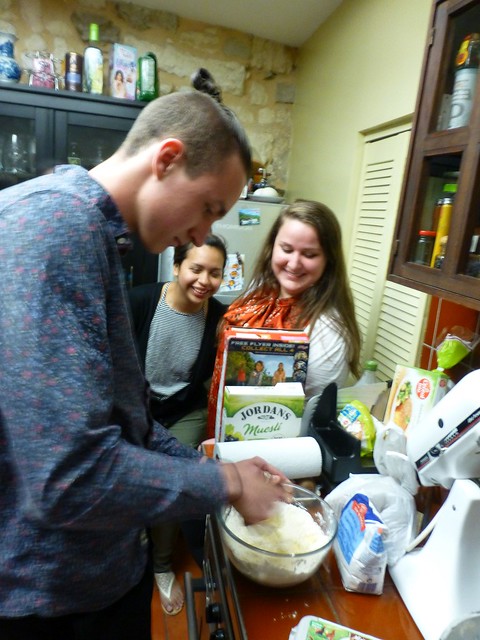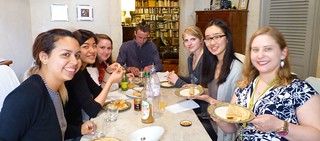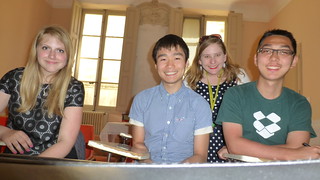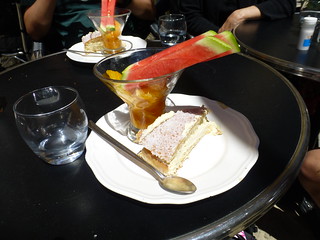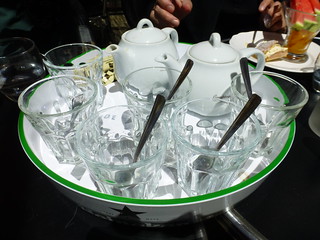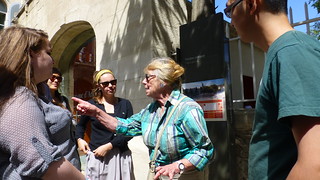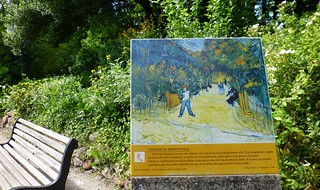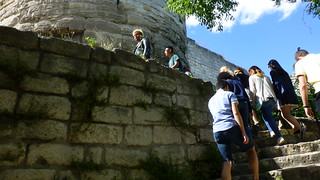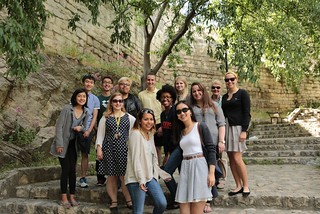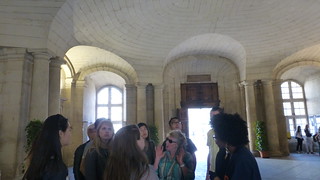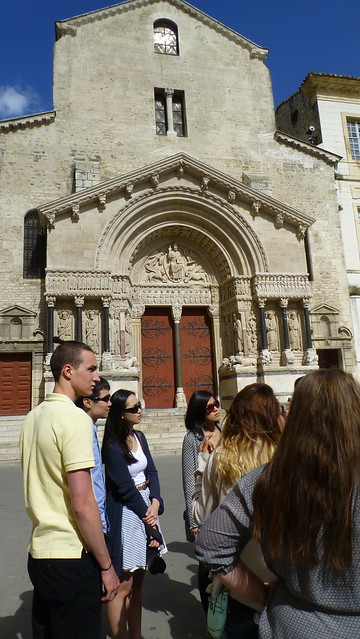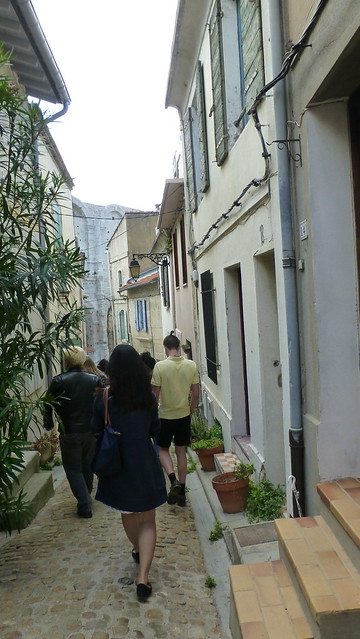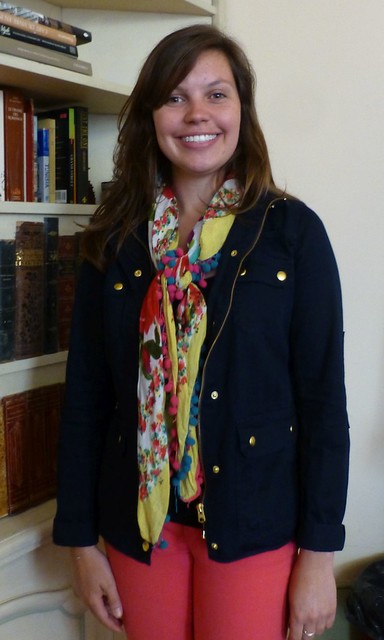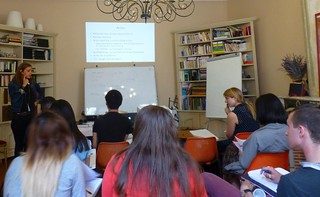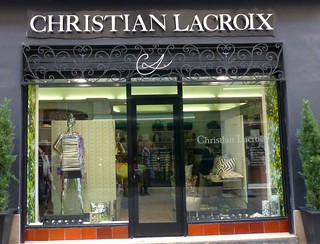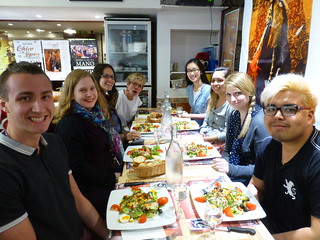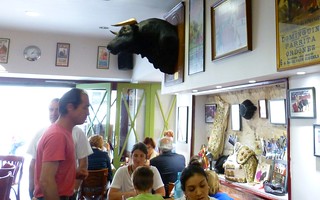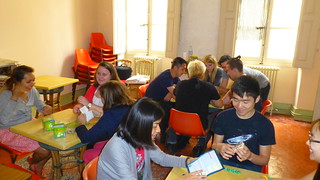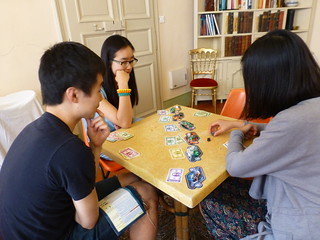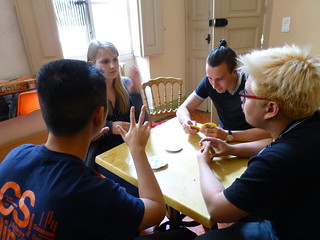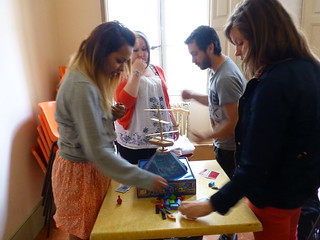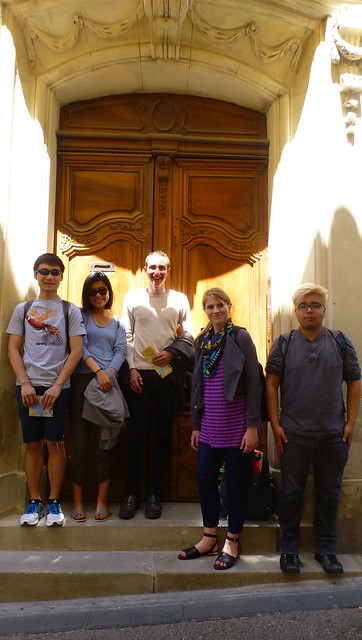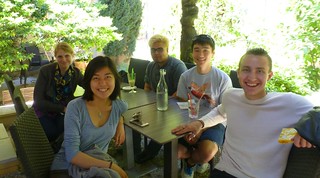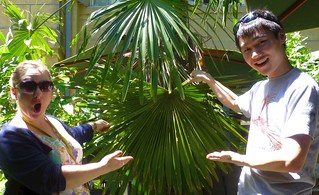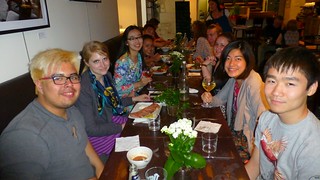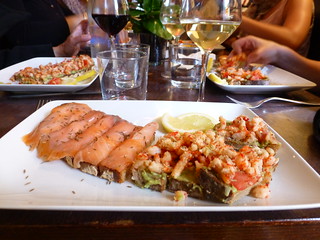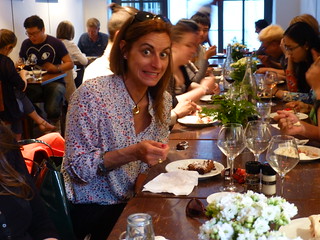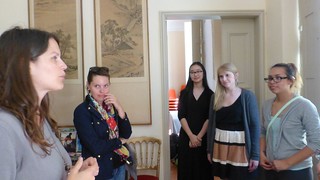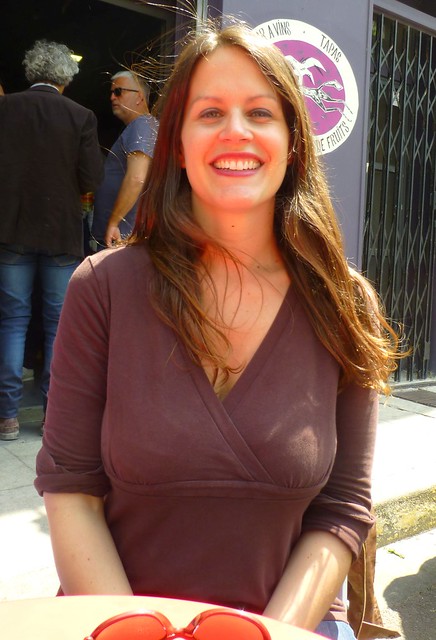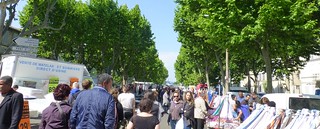I just arrived in Arles this afternoon. The process of getting from the Marseille airport to the Arles train station (where one of us will meet you) can look a little complicated, so I took pictures of every step for you.
First, if you arrive in Hall 1, when you come out of the baggage claim area, you’ll see signs like this:
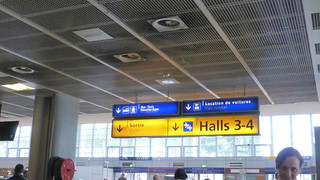
These are confusing, because the navette (shuttle) pick-up is indeed on the left, but it is on the opposite side of the airport from where you need to buy the shuttle/train tickets. Instead of going left, as one might assume, you instead have to exit the building and turn right.

Walk toward Halls 3-4, past the buses and taxis.
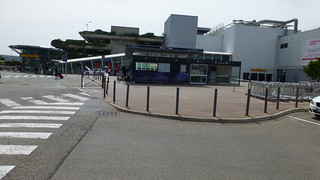
You will arrive at this little building. It has machines in it that ONLY accept bank cards with microchips. You’ll have to walk around to the window and purchase your train ticket from an actual person, sliding your card (or cash) under the window. Since there are a few train stations in Marseille to choose from, be sure to ask for a ticket from the Vitrolles station to Arles. I asked them today, and they assured me that there would be people at the ticket window when students arrive on Sunday. Your train ticket (a little over 12 Euros) also works as your pass for the navette. The ticket works for any train on that line going between those two stations, so don’t panic about needing to reserve a seat on a specific train. They run every half hour during the day. The SNCF (train) agent printed out a list of departure and arrival times for me.
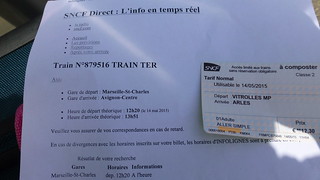
Then, turn around and walk back toward Hall 1. Across the street from one of the Hall 1 exits is this little bus shelter. It says “Navette Gare” on it, and again make sure that you go to the Vitrolles one. This is where the shuttle bus will pick you up. There is a display screen that tells you how long the wait is.
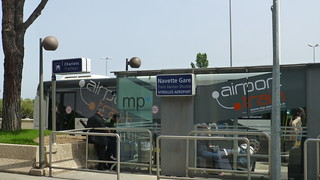
Typically, train lines are named based on their final destination. When you arrive at the Vitrolles train station, you might notice that there are two train lines that go Avignon. Careful: only one of these lines goes to Arles! Go up the first set of stairs labelled “Avignon-Montpellier.” (Remember how I told you to pack light? 😉 )

To verify that you’re in the right place, when you get to the platform, check the display screens and make sure that you see “Arles” listed as one of the stops.

Once you’re on the train, pay close attention to the announcements. When you hear “Prochain arrêt : Arles,” get ready to disembark. If you miss your stop, you’ll end up in Avignon and will have to buy another ticket to come back.
See you all on Sunday!


